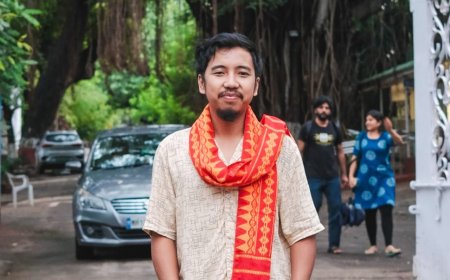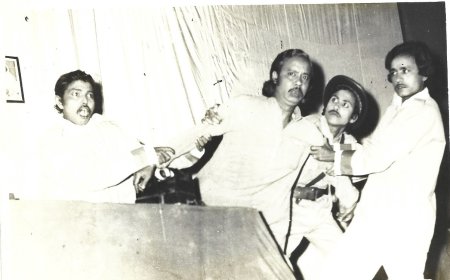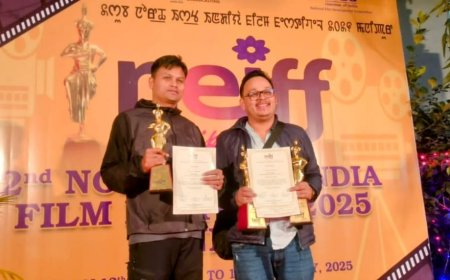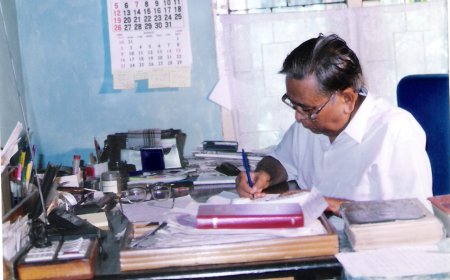Tribute: SOUMENDU ROY (1932 – 2023)
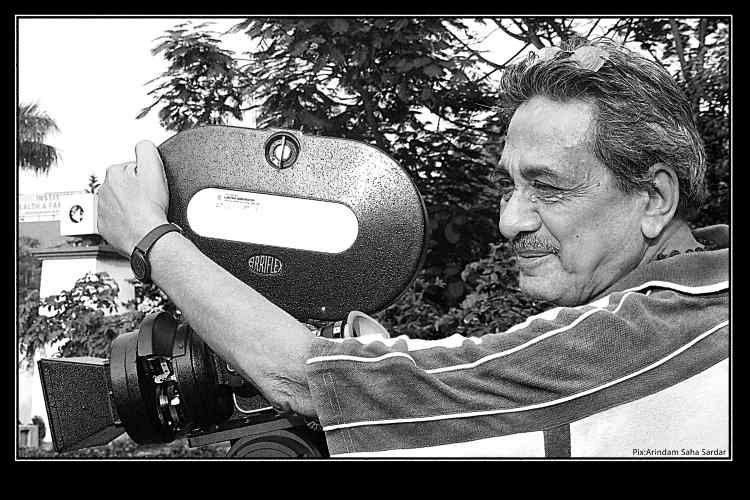
Dr. Shoma A. Chatterji pens a heartfelt homage to the esteemed cinematographer, SOUMENDU ROY, whose untimely demise occurred in the city of Kolkata in 2023, at the venerable age of 91.
Soumendu Roy, one of the most outstanding cinematographers of Indian cinema who got his independent break with two films of Satyajit Ray, Teen Kanya, an anthology of three short stories by Tagore, and a documentary, Rabindranath Tagore, both of which Ray was commissioned to do as part of Rabindranath Tagore’s centenary in 1960, is no more. He passed away in 2023 in his South Calcutta residence.
“When I began researching my documentary on cinematographer Soumendu Roy, I collected a lot of material on the way such as entire photograph albums filled with working stills of the cinematographer along with Satyajit Ray and other filmmakers like Tapan Sinha who he worked with. He gave away everything he had to me such as filters, negatives, light meters and eight movie cameras including two 8mm cameras. I restored the photographs. He was overjoyed to see the quality of the restored prints. I felt, why not make productive use of the photographs and hold an exhibition for people interested in cinema? This led to my first exhibition of photographs on Soumendu Roy following the documentary I made on him,” says Arindam to elaborate what led him to become a film archivist. He has dedicated an entire hall of his archive to the collections he had done from Soumendu Roy and has named it Soumendu-Sinduk which is a museum of its own kind.
Sardar, in keeping with Soumendu Roy’s wish, is not organizing any condolence meeting on Soumendu Babu. He clearly expressed that no condolence meeting or function should be organized as a tribute to him following his demise. “But he said that he would like his work to be remembered by generations to follow through his works either by exhibiting some of his works, or, by organizing talks and screenings of films he had cinematographed. So, to respect his last wishes, we have organized an exhibition of archival material relating to Roy’s works at an exhibition of his works – still photographs, recorded clippings of audio and audiovisual interviews, the cameras he used over the years, booklets, scripts available, and everything related to Roy’s work as a cinematographer par excellence. This will be held on October 8 in a collaboration between Jeebonsmriti Archive founded by Arindam Saha Sardar and Chitrabani, a training ground for cinema founded by the late Father Gaston Roberge. This exhibition will be open alongwith some distinguished intellectuals from cinema and academics followed by the screening of the film Samapti which marked the debut of Roy as an independent cinematographer.
‘‘Cinematographers, by and large, don’t get due recognition,’’ points out Papia Roy, whose 30-minute documentary on Roy, Portrait of a Cinematographer, was screened at the International Film Festival of India (IFFI) in Goa in 2006. ‘‘By working with directors as varied as Ray, Tapan Sinha and MS Sathyu, Roy was exposed to different film-making styles. My film is a tribute to the self-taught adventurous creativity of Indian cinematographers,’’ said Papia Roy. In the film, Soumendu Roy says, ‘‘seeing my willingness to learn, they—and art director Bansi Chandragupta—encouraged me. But in 1961, after Mitra developed a major eye problem, Manikda (Ray) asked me to shoot Teen Kanya. Earlier, he had asked me to handle the camera for his documentary Rabindranath Tagore. The two films were to mark the poet’s birth centenary. Always keen on realistic treatment in cinema—Pather Panchali’s iconic status owes a great deal to the diffused bounce lighting thought up by Subrata Mitra, and I got his chance in Teen Kanya. I put in all that I’d learnt as a helper with the trolley and later as a caretaker of the Mitchell camera.’’
Portrait of a Cinematographer opens with footage from the three short films of Teen Kanya, each different from the other in lighting and framing. The narrative then touches on Ray’s Abhijan, where Roy fixed a 24-volt spotlight—then used only in airports—to make up for the inadequate light cast by the headlights of the Chrysler that is central to the film.
Arindam Saha Sardar’s documentary has a running time of 72 minutes and is simply titled Soumendu Roy. Roy’s four National Awards (for Asani Sanket, Sonar Kella, Shatranj ke Khiladi and Suchitra Mitra) are firmly locked up, and only two photographs—an autographed blow-up of Ray and sitarist Ravi Shankar, and one of a very young Roy with Ray—point to a distinguished career, there’s no arguing the point that Roy remains one of the most outstanding cinematographers within Indian cinema. On rare occasions, a celebrity prefers the shadows.
Soumendu Roy has been shot as one long interview almost totally on location in Khannan near Burdwan, near Hedua in Kolkata, at C. Ghose Studio above Albert Hall, in Albert Hall itself, and in the premises of Roop Kala Kendro other than some shots in Roy’s home. Roy answers very thoughtfully structured questions posed by his interviewer Kalyan Bandhu Mitra. The narration is more in the form of reminiscences from the first person perspective of Roy. The opening frame is mounted against the backdrop of a Mitchell camera, the camera with which Roy began his independent journey. One can hear the whirring sound of the reel turning as the credits come up and the sub-titles begin. The film then pauses on an Arriflex to close on digital camera, marking the technological journey of this great cameraman. The film closes on the strains of Alo Amar Alo reflecting on this man who has painted with light all his life.
He admits that he has had to make compromises for family needs, but adds that these were few and far between. One is surprised to learn that he has never cinematographed a Hindi film though he has worked for a few Tamil films. He looks upon Subrata Mitra who he assisted for years together, as his mentor and guru. When asked about having had to work on limited budgets and little equipment, Roy explains that it is not only a big challenge to work within infrastructural and monetary limitations; it is also a great learning experience lavish budgets cannot teach you. The footage acquires colour when Roy begins to talk about Asani Sanket, his first work in colour. It goes back to B-and-W when the film returns to base. He talks about his memorable work in Tarun Majumdar’s and Tapan Sinha’s films among others.
When a film makes history, its director attains immortality. The actors’ faces become famous. But the technical experts, such as the cinematographer, editor, art director, sound designer whose contribution to the final product is no less than the rest of the team, go unrecognized and unnoticed because they work behind the camera, away from the limelight. It is these documentaries that will keep the creations made by these great technicians alive.
***
What's Your Reaction?




































